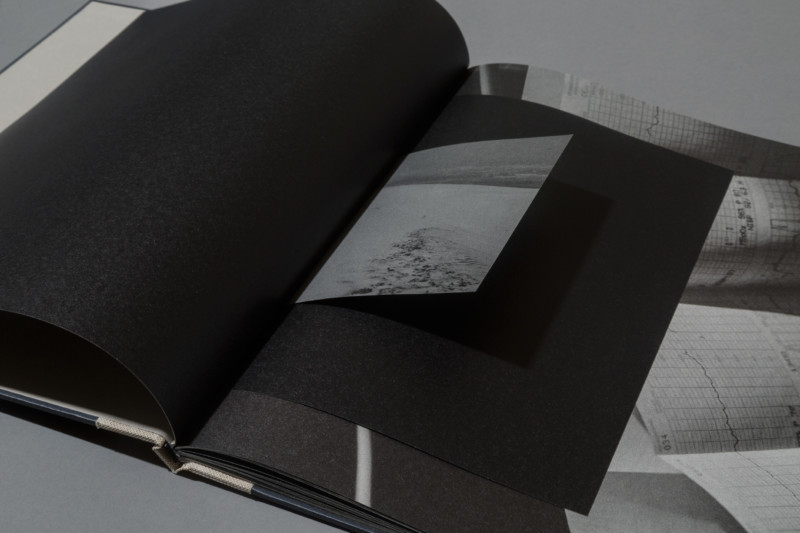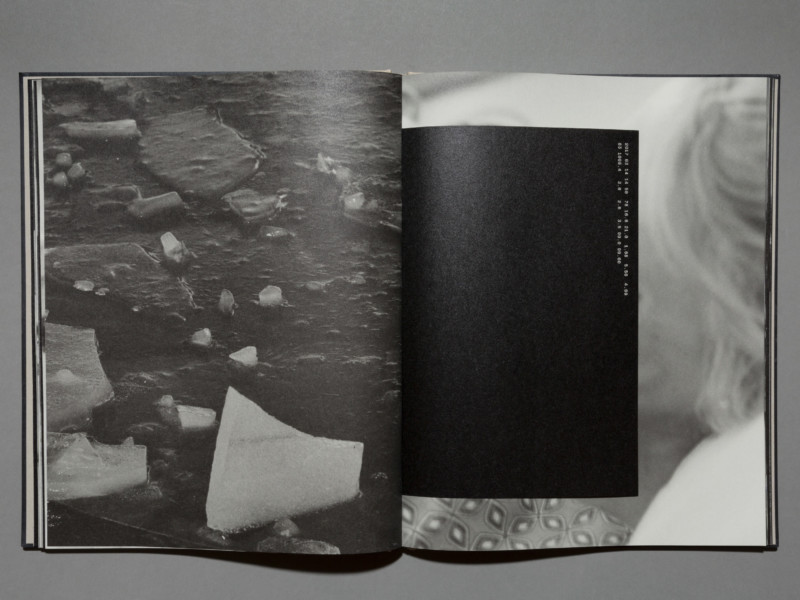Cole Barash (b.1987) is a visual artist based in Brooklyn, NY. Working in the mediums of digital, analog, and archival photography, Barash often focuses on the conversation of color and composition between two objects or moments. Well acquainted with international subcultures, Cole seeks “subjects where the boundaries are more open and not as seasoned”. Using an organic approach, his portraiture and still life became known for their candid and spontaneous sense of intimacy.
I talked to artist Cole Barash regarding his photo book Stiya with some input from Clint Woodside from Deadbeat Club. Deadbeat Club is an independent publishing group dedicated to the production of small run & limited edition publications rooted in contemporary photography.
You can get a copy of this elaborated and beautifully crafted and photographed book here

First Cole, can you tell us how you originally got started in photography at the first place?
Cole: At twelve, I picked my Dad’s AE1 and up and ran out into the forest. Photographing everything and anything it was a portal to my curiosity I believe. As it matured and grew, I began to utilize it more thoughtfully and intentionally. At the time I was not interested in other mediums such as painting or sculpture. I now however find both of those more interesting to look at than photography. Maybe it’s because photography is so over saturated or it feels limiting a bit.
This book ‘STYIA’ is a work that came from two major events in your life that happened days apart – both the birth of your child and ‘Stella’ the storm. I found your juxtaposition of these two events both interesting and unusual. I don’t think many people would necessarily put these two things one next to the other – can you tell us more about this notion and how this project became what it is now?
Cole: Actually at the start I had no idea. Before the birth this large storm (a Nor”easter) had hit 24 hours before going into labor. I love going out into nature and attempting to have a conversation with it visually. Going out and reacting to an environment through a composition or impulse. This is often the way I digest things in life. After this the next day we left for the hospital and went into a four day labor. At the same time I wanted to investigate the idea of a forbidden place being the “birth room”. Where you hear so much about but never really know until you experience it. I was asking the questions within myself of what is this place, what does it look like in depth and hyper focused, what are the oddities and obscure scenarios. Then two months later when i was looking at prints on my studio of both the events I started to see the relationship of pure energy in two different forms human kind and mother natures.


I feel like usually when I think about child birth and photography I think about images that are or very documentary or very intimate and emotional – this book is an interesting hybrid of intimate but also in a way very distant, analytic almost as if you are researching the moment and collecting its data. I think it is an interesting approach to a subject matter that is very ‘tender’ with a new visual approach. This is not really a question just my observation but would be interested in heating your response to it.
Cole: Wow that is actually a very interesting question. As that is very much my approach to a lot of my practice. I go into a situation and environment almost in a objective way of just collecting data reacting from my gut I guess in a subjective way however not thinking to in depth about it. As to me it’s an observation and a collection of a live thought that I will further process once it is printed and next to other. This is where I then start to further analyze and dive into a larger idea as a whole. Often seeing other things that I did not see in the time of the actual event or place especially this one with it being so crazy and intense of a birth. This approach is also a method of reliving or re experiencing something at a second pass in a slower way.

Can you tell us more about the title of the book?
Cole: Well when Tucker Phillips (the designer) and I sat down at some shit coffee shop in brooklyn we both decided we wanted this object (book) to be something different. Something against the normal, very formally laid out book with lots of white space and photographs on the right side. This does however have its place absolutely in the world just not with this work. With this body of work and it being more experimental, and abstract we wanted to create something that was more tangible. Something that would keep the viewer unexpected of the next and that is where the reveals and multiple page sizes came into play.
Whoops, just saw the questions asked about the title It is a married word of my daughter, Iya and the storm Stella.
I think what is most captivating about the book that on the one hand it is an intimate look at your personal life yet the layout of the book, it’s organized chaotic aesthetics almost detaches it from the specificity of the people and places and create a mini universe where the viewer can project other people or events on to this book. Would you agree with that observation?
Cole: Yes, that is a valid observation that I agree with at least. It is my hope when creating art (objects) that people (viewers) are able to go elsewhere with it personally. Whether it brings them to another place or leaves them wondering and feeling something. If either of those happen I know inside it feels right.


This book has an editing and sequence that is visually more challenging than the average photo book –with the layers and different page sizes – can you tell us about the process of editing the images and sequencing them together? What is the most important thing for you when doing such a thing?
Cole: I suppose that this has a bit to what I had stated above in which we wanted to create something that is more tangible. More of an experience and keeps the viewers in focus with the unexpected reveals of images and page sizes. It also suits the imagery I think as the change of scale is quite often in the compositions.
Something that struck me from the beginning in the book was its layout and approach. It has layers of pages on top of each other – creating many visual juxtaposition within the pages of the book. What was the concept and approach behind creating this layout?
Cole: I believe this probably blends into the same answer as above.
In addition, there was a choice to use a metallic, silvery paper that both compliments the black and white photos but also allows the photos to have this additional dimension and texture to it – what stood behind that choice?
Cole: Well I like to believe in good work is often timeless. It is my aim (and not always achieved) to make work that is in that direction. With the monochromatic choice and general flatter contrast it has this sense and feeling of that to me. As these could have been made 50 years ago possibly. The silver texture was a choice to emphasize the flatter highlight in more of a rich tasteful way. I also think in the storm with so my sand blowing around and constantly this feel of grit to it in the air this would help translate this feeling (the silver inks). The double hits of black were also used in printing to get that very rich black.


What was the most challenging part about making this book?
Cole: Probably the engineering of it once the design was done. How it was actually going to go into production and come out completed.
Can you tell us a little about your collaboration? How was it working together on this book?
Cole: Clint was great to work with. He gave me lots of freedom and trust. I am so very particular in my practice and aesthetic that I often become quite obsessed with it. As each detail is extremely important to me and especially the sequence. Clint gave me the trust and space I needed here to complete that. Once the design was done that Tucker and I worked hard on Clint came in and handled the production/engineering with the printer which was no easy task. He killed it.
Clint: Cole and I have worked together a bit. I’ve always loved the way he approaches projects. We were looking at a few bodies of work to publish and once he showed me this I knew that was the one. I also knew that this was gonna take a while because Cole is pretty particular about things. More than most people I work with, but at the same time, the outcome always blows my mind, so I just sat and waited. It killed me a bit but i saw the magic so I waited. I think this took about a year and a half to actually get it in a book form. And once I saw it I was not disappointed… ha!!


Clint, how do you guys, as the publisher, choose whom to work with? What was it about Cole’s book that made you want to be a part of it?
Clint: Deadbeat Club is a bit of a family affair. There is a lot of trust on both sides when it comes to publishing a book of another person’s work. Often the people I work with are people i have a relationship with. That helps when I need to be honest about an issue in the work, or if the artist thinks i am not doing the project justice. When there is an issue, it’s easier to talk with a friend about it then someone you are in a business relationship with. That said, this is a business, and there is respect there… but we try to make that the last part of the equation.
With Cole’s book, when I saw the work, I just knew it was what we wanted. There is nothing like this out there… there are plenty of books about having a kid, but they way Cole treats the work, the marriage of his surroundings and the labor, the treatment of the photographs. It’s all just so different than anything I have ever seen. It just had to be done.
Any advice – publishing, production, artistic or more – that you would like to give our readers?
Cole: Make the time to make the work. If you really believe in yourself and the work you want to make the magic ingredient is time and blocking out serious chunks to it to dedicate to your practice in a disciplined and serious way. Also, when showing new work, don’t show 100 people as art is so subjective. Show a small handful of people you trust/respect to get feedback and push further.
Any news/events coming up that you would want our reader to know of as a chance to see more of your works and books?
Cole: I am working on two other bodies of work at the current time. The Sound of Dawn (2016-present) and Henry (2017-present) both ongoing. No idea when they will be done but maybe they will surface out into the world someday.
